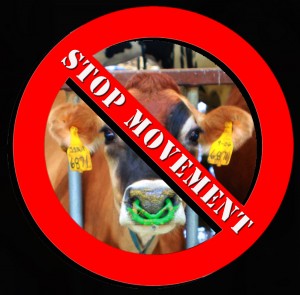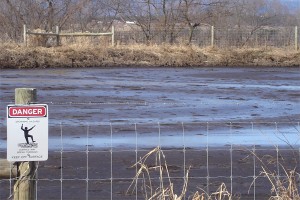Laboratory release leads to limited outbreak in England in 2007
 Here is the play by play: The first case was a beef herd in Surrey. The diagnosis was confirmed August 3. An immediate nationwide stop movement order on livestock went into effect. A protection zone extending 3 km (a little less than 2 miles) and a 6.2 mile radius surveillance zone were established.
Here is the play by play: The first case was a beef herd in Surrey. The diagnosis was confirmed August 3. An immediate nationwide stop movement order on livestock went into effect. A protection zone extending 3 km (a little less than 2 miles) and a 6.2 mile radius surveillance zone were established.
A second case was found in cattle near the first farm on August 6. Exports of animals and animal products were shut down. By August 8 the vaccination contractor was prepared to mobilize. Vaccination was not authorized at any time during the outbreak.
On September 8 the surveillance zone was lifted per protocol 30 days after culling, cleaning and disinfection of the second premises were completed. Movement restrictions were lifted.
Within a week of lifting the movement bans, three additional cases of FMD were identified. Movement restrictions were reintroduced September 11. It was later determined that the fifth case identified was linked with the second one and was the start of the “second outbreak”. This case was outside the initial surveillance zone. How the infection travelled from one to the other remains a mystery.
Three more cases were identified by the end of September, the last one on September 30, exactly 6 years after the last case was found in the 2001 outbreak.
Restrictions on movements were lifted progressively through October according to established risk zones. All restrictions were removed by the end of December. Meanwhile England also suffered an incursion of two other foreign animal diseases: Bluetongue and Avian Influenza.
Eight premises were directly affected and lost their livestock. All other livestock farms were affected, too, making the ramifications of a localized outbreak widespread and costly.
In some respects the government response was greatly improved compared with 2001. Or maybe it was that speed and spread of the outbreak were greatly improved?
Continued on Part 4 of 4








